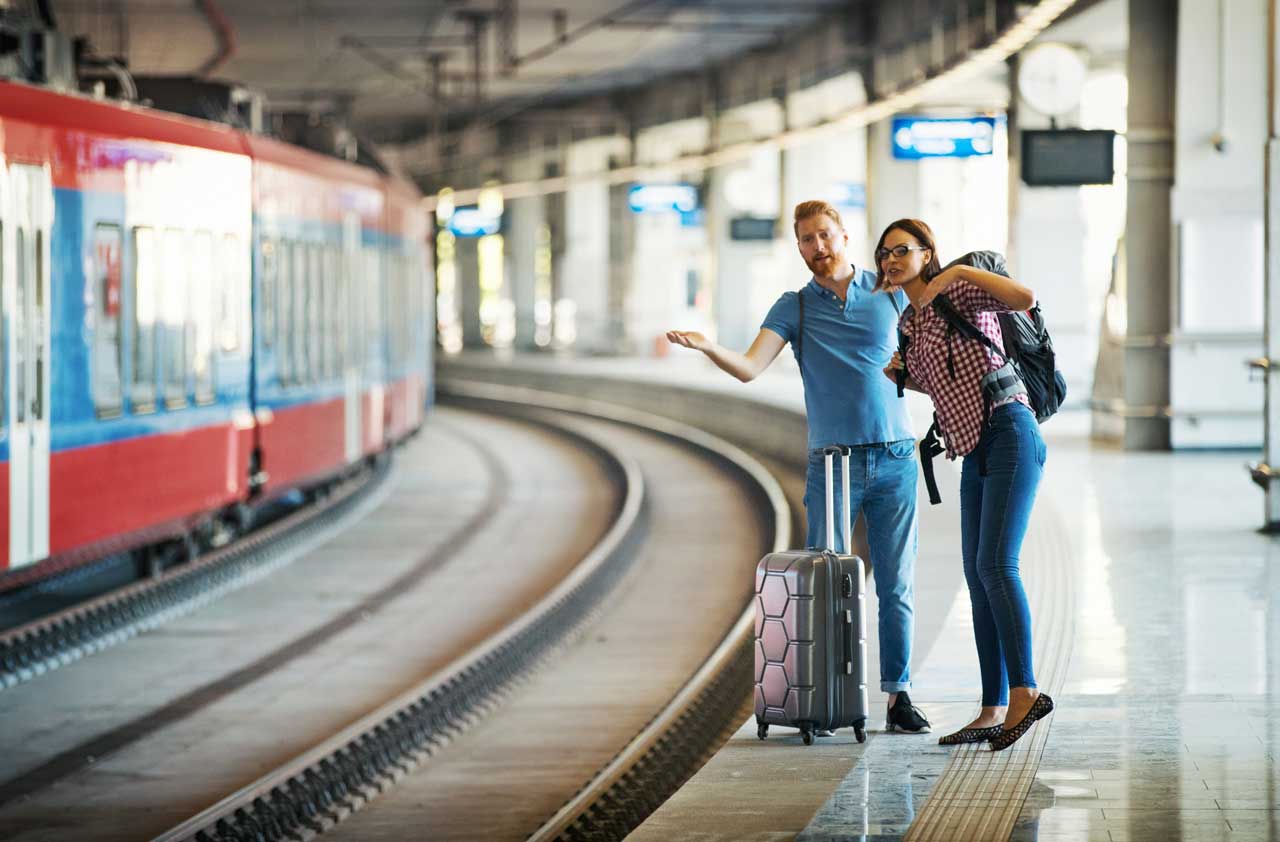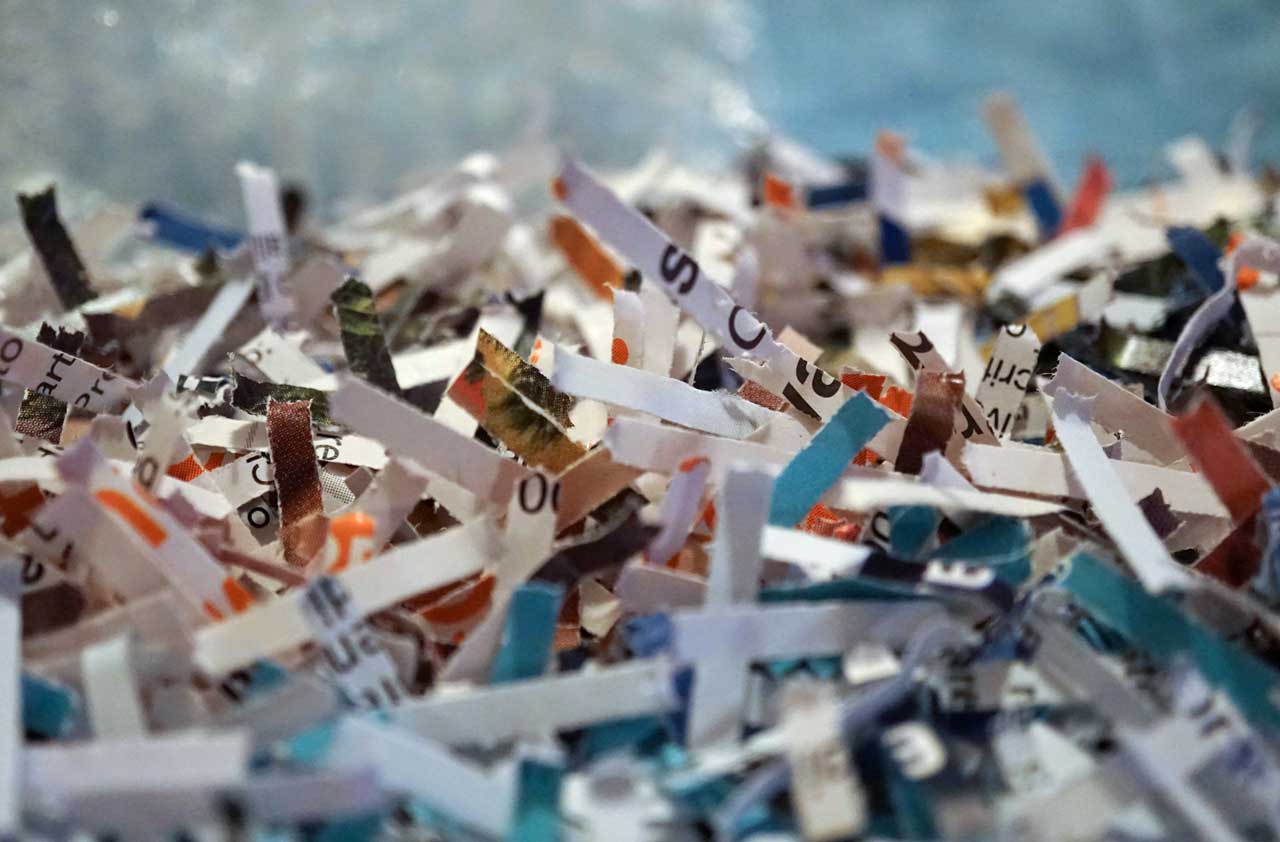13 Ways to Simplify Your Finances
We know you're stressed out.

We know you're stressed out. With everything you’re expected to keep up with in a day, it may help to find ways to make your life a little easier here and there. Our strategies can help you simplify, streamline and organize your financial life to free up both time and cash.
Take a look.

Streamline Your Portfolio: The One-Fund Option
If you’ve got more tickers in your mutual fund portfolio than the local cardiac ward, it’s probably time to simplify. A portfolio of 20 stock funds will likely mirror the stock market as a whole—and if that’s the case, you could reduce your costs and save some time with a pared-down portfolio.
If you like the simplicity of putting all your eggs in one basket, Vanguard Wellington (symbol VWELX) is the basket to own. The venerable fund, launched in July 1929, invests in a mix of stocks and bonds and is a member of the Kiplinger 25—the no-load funds we like the most. Wellington has a value tilt, meaning it searches for stocks and bonds that Wall Street has undervalued. Currently the fund has 53.9% of its portfolio in U.S. stocks, 11.7% in international stocks and 31.9% in bonds. The fund has averaged an 11.1% gain the past 10 years, or about 2.1 percentage points more per year than the average fund in its category. An alternative: Vanguard Star (VGSTX), which invests in a diversified handful of other Vanguard funds.
Another solution is a target-date fund, which adjusts its holdings based on when you plan to retire (see Building a Better 401(k)). Simply choose the fund with the date closest to your retirement year. T. Rowe Price has consistently good target-date funds; T. Rowe Price Retirement 2030 (symbol TRRCX), for example, ranks in the top 1% of its category over the past 10 years.
—John Waggoner

Streamline Your Portfolio: Two or Three Funds
Vanguard investors can create a low-cost basic portfolio with just two index funds. Start with Vanguard Total World Stock (symbol VTWSX), which represents all the stocks in the world—53.8% of assets are invested in U.S. stocks and 44.8% are in non-U.S. shares. You won’t have to worry about how to split your money between U.S., foreign and emerging-markets stocks, and you’ll pay just 0.17% in expenses. For your bond allocation, stir in Vanguard Total Bond Index (symbol VBTLX), which charges 0.05% in expenses.
If you want a bit more control, you can go with three funds: a U.S. stock fund, an international fund and a bond fund. Vanguard investors, for example, should consider mixing Vanguard Total International Stock Index (symbol VGTSX), which charges 0.11%, with Vanguard Total Stock Index (symbol VTSAX), a U.S. large-cap index fund that charges 0.04% a year.
Other low-cost index funds to consider for a three-fund plan include Fidelity Zero Large Cap Index (symbol FNILX). Introduced in 2018, the fund charges no annual expenses and uses a proprietary index that tracks Standard & Poor’s 500-stock index closely (but not exactly). Fidelity Zero International Index (symbol FZILX) will invest your money abroad with no annual expenses.
Similarly, Schwab International Index (symbol SWISX) will give you foreign exposure to developed markets for just 0.06% in annual expenses, and Schwab Total Stock Market Index (symbol SWTSX) will add a diversified U.S. stock portfolio for just 0.03%. Schwab U.S. Aggregate Bond Index Fund (symbol SWAGX) will get you all the fixed income you need for 0.04%. Fidelity U.S. Bond Index (symbol FXNAX) is another good choice.
If you’d like to add a money fund to the mix, our favorite is Vanguard Prime Money Market (symbol VMMXX), which charges 0.16% in expenses and yields 2.3%.
—John Waggoner

Put Retirement Savings on Autopilot
One of the best features of a 401(k) is the ability to invest at regular intervals, a practice known as dollar-cost averaging. It’s not merely convenient; it ensures you’ll buy more shares when the market is low and fewer when it’s high. If you don’t have a 401(k), ask your brokerage or fund company about an automatic investment plan. Nearly every financial institution in the world will be happy to take money from your bank account at regular intervals.
You can set up regular withdrawals, too. The investment company will send you a check for the amount you want on a monthly, quarterly or custom basis. Most companies will also help you calculate your required minimum distributions from your retirement account.
Finally, if you’re looking for regular (but not guaranteed) income in retirement, consider a managed payout fund. The Vanguard Managed Payout Fund (symbol VPGDX) aims to distribute about 4% of your account each year. T. Rowe Price Retirement Income 2020 (symbol TRLAX) fund targets an annual payout of approximately 5%. Schwab’s Monthly Income funds offer a range of payout options, from 1% to 8% a year.
—John Waggoner

Make Budgeting Easier With These Apps
If budgeting apps with tons of features and intricate rules about how you can dispense your money seem like overkill, turn to an app that just tells you how much you can spend. For example, Goodbudget puts the old-school envelope system into action by allowing you to stuff virtual envelopes representing different spending categories and simultaneously track the cash you have on hand. The free version gets you 10 “regular” plus 10 “annual” or “goal” envelopes, and the ability to track one virtual spending account; Goodbudget Plus ($6 per month or $50 per year) gives you unlimited envelopes and accounts.
To see a snapshot of how much money you have available while you’re on the go, try PocketGuard. After connecting your accounts and setting up a monthly savings goal, the app will calculate how much leftover money you have to spend each day, week or month after you pay all bills and subscriptions. It will also analyze your spending in the form of a pie chart and let you set spending limits on each category. PocketGuard Plus ($3.99 per month, or $34.99 per year) lets you create your own budget categories, incorporate cash transactions and register multiple goals.
Or use budget templates from Microsoft Excel, Google Sheets or Apple Numbers, including templates for different circumstances, time frames and occasions (weddings, holiday shopping, remodeling). For extra convenience, look for templates that allow you to enter your planned and actual costs into preset categories and that automatically do the math to figure out how your costs stack up against your income. If you would rather make calculations yourself and deal with expenses only, you’ll find an array of basic downloadable budget templates at Mint.com
—Miriam Cross

Automate Your Rebates
Price-protection services comb your e-mail inbox for order confirmations and shopping receipts from major retailers and for hotel reservations from selected booking sites. Then they search for price drops and claim the refund for you.
Earny.com works with more than 15 retailers, as well as all Citibank cards and Mastercards (for up to four claims per year). It deducts a 25% fee from each refund, or you can pay $9.99 for a monthly subscription (the free “Lite” plan covers Walmart purchases only). If you link credit card accounts that offer price protection, you can also get refunds on purchases from Amazon. Paribus.co (free) will monitor your inbox for receipts from more than 25 major retailers, but it doesn’t monitor credit card accounts.
—Patricia Mertz Esswein

Combine Your Insurance
Getting your home and auto insurance from one company is convenient and can save you money. “It’s easier to review your policies with one insurer and see at a glance if your limits and deductibles are appropriate for your needs,” says Penny Gusner, consumer analyst at Insurance.com. You’ll deal with one entity when paying bills and tracking claims, and some insurers, including Esurance, Progressive and Safeco, impose only one deductible for claims that involve both your car and home—say, if a storm causes a tree to fall and damage both pieces of property. According to Insurance.com, the average bundling discount for auto and home insurance in the U.S. is 11.4% off the auto premium (9.6% for auto and condo combos, and 5% for auto and renters). The overall discount is usually divided between the two policies.
Many insurers offer a bigger discount if you bundle more policies, such as life insurance or coverage for an RV, motorcycle or boat. Even companies that don’t underwrite a certain type of insurance may partner with other insurers to offer that coverage and a bundling discount. But bundling won’t always result in savings, so shop for policies individually as well as in a bundle.
—Miriam Cross

De-Stress Your Travel Planning
Sorting through multiple plane, train and bus schedules before a trip can be overwhelming. For an easier way to see your options, plug your origin and destination points (cities, landmarks and even addresses anywhere in the world) into the search box on Rome2Rio. The site will calculate routes by plane, train, bus, ferry and car and estimate the price range for each mode of transportation.
As your itinerary falls into place, forward your confirmation e-mails to travel-organization app TripIt. (You can also sync your inbox or add details manually.) The free version of TripIt helps you navigate among different locations, search for amenities near your hotel and assess the safety of a neighborhood. And it will automatically create a schedule to help keep your vacation on track. TripIt Pro ($49 per year) also sends you real-time flight alerts, airplane seat openings and gate changes; advises you on when to leave for the airport based on traffic reports; and provides searchable airport maps that will direct you to everything from the nearest sushi restaurant to a merchant that sells aspirin. You can also find useful tidbits about the country you’re visiting, including its type of electric sockets, vaccination requirements and tipping etiquette.
—Miriam Cross

Keep Tabs on Your Investments
Budgeting apps such as Mint are great for tracking income and outgo, but they are notoriously inadequate when it comes to compiling and analyzing investments that may be spread across a number of taxable and tax-deferred accounts. But a couple of investing firms have services that organize and track your investments in one place. A view of your whole portfolio will show you if your overall asset allocation aligns with your tolerance for risk and whether your investment mix is on track to reach your goals.
If you sign up for a free account with Personal Capital and link investing accounts by entering log-in credentials at the site, you can see your entire portfolio’s allocation and performance. You can view the combined portfolio categorized by asset class, stock sector or individual holdings. The “You Index” feature shows how your portfolio has performed compared with U.S. stock and bond indexes or a basket of foreign stocks. An investment checkup tool recommends adjustments to asset allocation based on your investing profile.
PortfolioAnalyst (free) from online brokerage Interactive Brokers is still a work in progress but provides a portfolio snapshot when you link outside accounts. The Portfolio Checkup breaks down your portfolio by asset class, sector and country and allows users to compare returns with dozens of benchmarks. You can also generate custom reports.
—Ryan Ermey

Eliminate Paper Clutter
You can clear out space in bulging file drawers and permanently tame the paper monster if you follow our four-step plan:
- Toss files you no longer need. Because the IRS generally has three years from the date of your return—or the date you file it, if later—to initiate an audit, it’s a good idea to keep all of your tax records at least that long. But hold on to copies of tax returns indefinitely. Keep records of your investments and property for at least three years after you sell. Self-employed people should generally keep their 1099 forms reporting business income, their receipts and other records of business expenses for at least six years. (For more advice on which tax records to save, see How Long Should You Keep Tax Records?) For other files, see the guide published by the Federal Trade Commission.
- Shred sensitive files. Use a cross-cutting shredder to destroy anything with personal information, such as your account numbers, your Social Security number (even partial numbers) or your financial information. To avoid the tedium of shredding a large quantity of material, you can take it to a Staples Copy & Print Center or a UPS Store to have it securely shredded (about $1 a pound).
- Digitize it. Save PDFs of scanned images on your computer, then back up your files on an external hard drive and in the cloud, where you can access them even if your PC succumbs to malware or goes missing. You can get limited space in the cloud for free, but if you need more capacity, you’ll pay a monthly or annual fee (see kiplinger.com/links/cloud).
- Enroll in e-delivery. The best way to reduce the influx of paper statements, documents and other sources of file overload is to enroll in electronic delivery from your bank, brokerage, creditors and utilities. When new statements are ready for you to view or pay, most businesses will send an e-mail reminder.
Utility bills and credit card and loan statements are generally available online for a year or more, and bank and investing statements may be available for several years. Fidelity offers access to account statements and trade confirmations for up to 10 years; Vanguard offers access to statements for six years and, for holders of accounts with less than $10,000, waives the annual service fee of $20.
—Patricia Mertz Esswein

Manage and Pay Down Debt
If you’re carrying debt on a few credit cards, transfer the balances to a single, low-rate card for one monthly payment and a lower interest rate. The American Express EveryDay card recently offered 0% on a balance transfer for 15 months (then 15.24% to 26.24%) if you make the transfer within 60 days of opening the account, and it charges no balance-transfer fee. The Lake Michigan Credit Union Prime Platinum Visa recently carried a rate as low as 8.5% and has no balance-transfer fee (join LMCU by donating $5 to the ALS Association).
Or consider a personal loan. “The structured, predictable monthly repayment plan will help you to stick to a budget and get out of debt by a specific date,” says Miron Lulic, founder and CEO of SuperMoney, a loan shopping site. The average personal-loan rate for someone with excellent credit is 9.8%, according to Bankrate.com. A third option: Pay off credit card debt with a home-equity line of credit. HELOCs recently carried an average 7.43% rate, according to Bankrate.
Consolidating or refinancing student loans can make sense, particularly if you have high-rate private loans; you may pay as little as a 2% to 3% variable rate if you have great credit and a healthy debt-to-income ratio. You can compare offers from online lenders such as Earnest, LendKey and SoFi at SuperMoney.com and LendingTree.com. If you have multiple federal loans, you can consolidate them into one federal loan, but you won’t capture a lower interest rate—you’ll pay a weighted average of the rates on each previous loan.
If you lengthen the loan term, you’ll likely fork over more in interest overall. Still, consolidation can be a good move if you want to lower your monthly payment, says Andrew Pentis, of Student Loan Hero, a site that helps borrowers manage student loans. You may capture a lower rate by refinancing federal loans with a private lender, but you’ll lose many of the benefits that federal loans offer, such as loan forgiveness, income-driven repayment, deferment and forbearance. “It’s the wrong decision for many borrowers,” says Pentis.
—Lisa Gerstner

Conquer Your Inbox
The joy of getting to “inbox zero” won’t last long if you let e-mail build up again. Professional organizer Andrew Mellen recommends these inbox-taming steps:
- Create separate addresses for personal and professional correspondence as well as for personal business (such as subscriptions, receipts, bills and statements). Next, set up folders where you can stash categories of e-mails you want to keep. For example, a single folder called Finances may be sufficient, or you may want a subfolder for each of your financial advisers or institutions. Be as specific as you need to be to find something quickly.
- Set rules to file old and new e-mails automatically to the correct folders, based on the sender, subject or content. Most popular e-mail providers allow you to do this. Delete anything that you don’t need to keep in each folder. Anytime you recognize a new trend in your e-mail, add to or edit your rules.
- Unsubscribe. Mellen likes the free app Unroll.Me to easily unsubscribe from unwanted subscription e-mails that clog your inbox. Check the ones you want to receive and Unroll.Me will create and deliver a daily digest of them when you choose.
- Set up a dashboard. If you use Chrome as your web browser, Sortd for Gmail (www.sortd.com) provides a dashboard that overlays your inbox. Use it to create lists of to-dos or priorities, then drag and drop e-mails into them. The basic plan is free, but you can upgrade to pro after a 14-day free trial for $6 per month.
- Set up action schedules. With Boomerang for Gmail (www.boomeranggmail.com), you can read an e-mail and set a time to review it if you need to delay action on it, draft an e-mail and schedule it to be sent later (say, when the recipient is most likely to see it), and get reminders to follow up on e-mails you’ve sent or received. The basic plan is free; after a 30-day free trial, the personal plan is $4.99 per month, the pro plan is $14.99 per month, and the premium plan is $49.99 per month.
—Patricia Mertz Esswein

Consolidate Your Credit Cards
- Stick with one issuer… If you use multiple credit cards from one issuer, you can maximize rewards. For example, if you have American Express cards that offer Membership Rewards points, such as Amex Everyday, you can use all your points collectively for a single redemption. With Chase credit cards offering Ultimate Rewards points, you can pool your points among your own cards or with one household member. Use the Chase Sapphire Preferred card ($95 annual fee), for example, to earn two points per dollar on travel and dining purchases, Chase Freedom to capture five points per dollar on up to $1,500 spent quarterly in rotating categories—such as gas stations, grocery stores, and streaming services such as Netflix and Pandora—and Chase Freedom Unlimited to collect three points per dollar on all purchases the first year (on up to $20,000 spent) and 1.5 points per dollar thereafter. When you’re ready to redeem points, move them all to your Sapphire Preferred account, which allows you to trade points for travel bookings through the Ultimate Rewards shopping portal at a heightened value of 1.25 cents per point or to transfer the points to loyalty programs of partner airlines and hotels.
- …Or just one great card. Pick a card that offers plentiful rewards on all purchases and you won’t have to stay on top of multiple bills or monitor for fraud on several accounts. We like Citi Double Cash, which offers 1% cash back when you make a purchase plus 1% when you pay the bill, for a total of 2% on all spending. (Citi is slashing benefits; see Credit Card Perks Are Being Squeezed.)
If you travel abroad regularly, consider Capital One Quicksilver, which pays back 1.5% on all spending and charges no foreign-transaction fee. Or go with a card that offers higher rebates in the areas where you spend the most. American Express Blue Cash Preferred ($95 annual fee) provides 6% cash back on supermarket purchases (up to $6,000 spent yearly, then 1%), and it recently added more than 20 video- and music-streaming services to the 6% category. Plus, the card has added transit expenses (including fares for buses, trains, taxis, Uber and Lyft, as well as tolls and parking fees) to its 3% category, alongside gas-station purchases. All other spending earns 1%.
—Lisa Gerstner

Get Help From a Financial Pro
A planner can take a load off your shoulders by taking care of certain tasks—managing your portfolio, for instance—and guiding you to smart financial strategies, allowing you to skip doing some of the research yourself. Planners can also suggest ways to streamline investments or other accounts.
James Kinney, a certified financial planner and owner of Financial Pathways, in Bridgewater, N.J., says a client came to him recently with 21 investment accounts holding 267 investment positions. “The complexity wasn’t accomplishing anything that couldn’t be done with a handful of good, well-diversified index funds,” says Kinney. Bobbie Munroe, a CFP and president of Supporting Your Choices, in Havana, Fla., says that clients often have several workplace retirement accounts from previous employers, and she helps consolidate them into one IRA or current workplace retirement account. A planner can also make life easier by working with a client’s other financial professionals—say, organizing and sending tax-related documents to a client’s accountant, says Munroe.
As you choose an adviser, look for someone who has meaningful credentials that require the adviser to pass rigorous exams. A certified financial planner (CFP) provides broad planning and expertise. A certified public accountant (CPA) is well-versed in taxes; a CPA with the personal financial specialist (PFS) credential may be especially helpful. A chartered financial analyst (CFA) focuses on investments. Although some other reputable designations are out there, others are flimsy and require little background or education. You can look up details on many designations at www.finra.org/investors/professional-designations.
—Lisa Gerstner
Profit and prosper with the best of Kiplinger's advice on investing, taxes, retirement, personal finance and much more. Delivered daily. Enter your email in the box and click Sign Me Up.
-
 Gold and Silver Shine as Stocks Chop: Stock Market Today
Gold and Silver Shine as Stocks Chop: Stock Market TodayStocks struggled in Friday's low-volume session, but the losses weren't enough to put the Santa Claus Rally at risk.
-
 Don't Wait Until January: Your Year-End Health Checklist to Kickstart 2026
Don't Wait Until January: Your Year-End Health Checklist to Kickstart 2026Skip the fleeting resolutions and start the new year with a proactive plan to optimize your longevity, cognitive health, and social vitality.
-
 Premium Rewards Cards: More Perks, Higher Fees
Premium Rewards Cards: More Perks, Higher FeesSome issuers are hiking the annual fee on their flagship luxury credit cards by hundreds of dollars. Are they still worth using?
-
 Money for Your Kids? Three Ways Trump's ‘Big Beautiful Bill’ Impacts Your Child's Finances
Money for Your Kids? Three Ways Trump's ‘Big Beautiful Bill’ Impacts Your Child's FinancesTax Tips The Trump tax bill could help your child with future education and homebuying costs. Here’s how.
-
 Key 2025 Tax Changes for Parents in Trump's Megabill
Key 2025 Tax Changes for Parents in Trump's MegabillTax Changes Are you a parent? The so-called ‘One Big Beautiful Bill’ (OBBB) impacts several key tax incentives that can affect your family this year and beyond.
-
 What to Do With Your Tax Refund: 6 Ways to Bring Growth
What to Do With Your Tax Refund: 6 Ways to Bring GrowthUse your 2024 tax refund to boost short-term or long-term financial goals by putting it in one of these six places.
-
 What Does Medicare Not Cover? Eight Things You Should Know
What Does Medicare Not Cover? Eight Things You Should KnowMedicare Part A and Part B leave gaps in your healthcare coverage. But Medicare Advantage has problems, too.
-
 15 Reasons You'll Regret an RV in Retirement
15 Reasons You'll Regret an RV in RetirementMaking Your Money Last Here's why you might regret an RV in retirement. RV-savvy retirees talk about the downsides of spending retirement in a motorhome, travel trailer, fifth wheel, or other recreational vehicle.
-
 The Six Best Places to Retire in New England
The Six Best Places to Retire in New Englandplaces to live Thinking about a move to New England for retirement? Here are the best places to land for quality of life, affordability and other criteria.
-
 Smart Ways to Invest Your Money This Year
Smart Ways to Invest Your Money This YearFollowing a red-hot run for the equities market, folks are looking for smart ways to invest this year. Stocks, bonds and CDs all have something to offer in 2024.
-
 The 10 Cheapest Countries to Visit
The 10 Cheapest Countries to VisitWe find the 10 cheapest countries to visit around the world. Forget inflation and set your sights on your next vacation.
